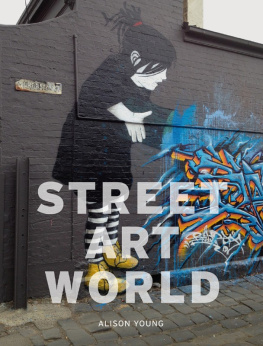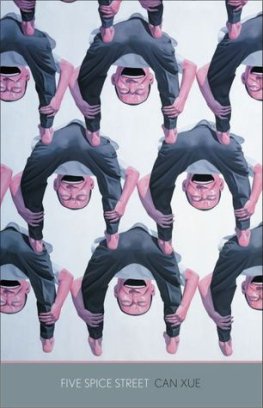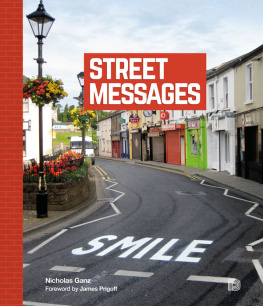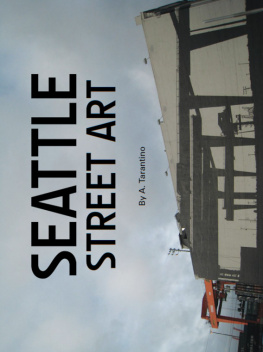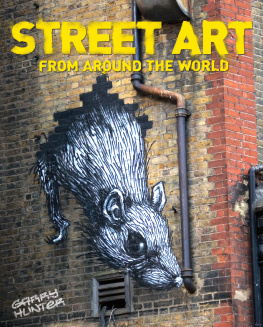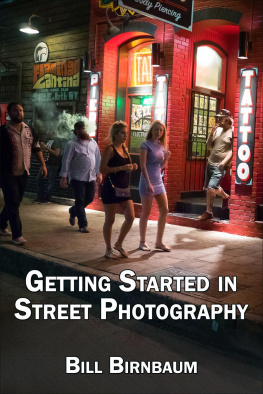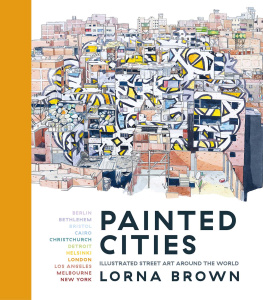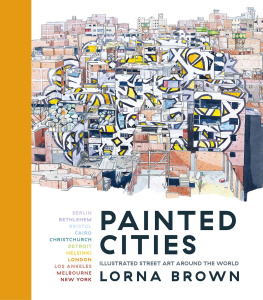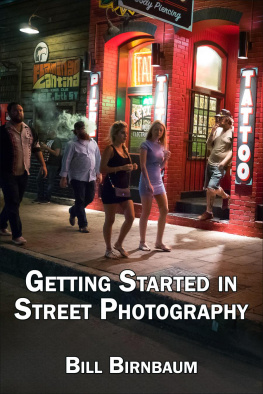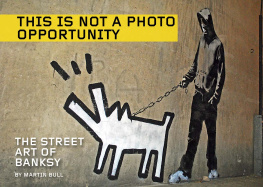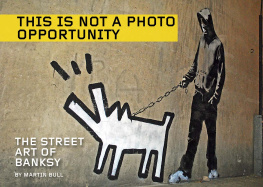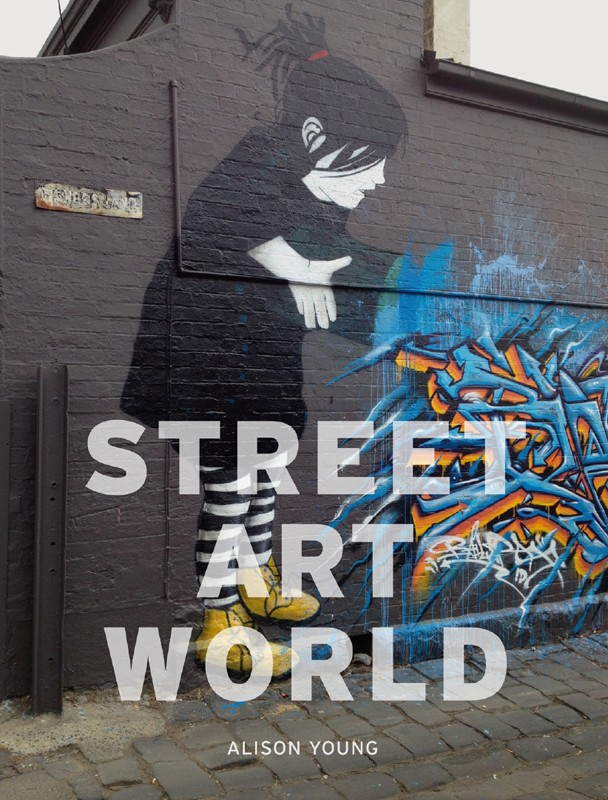STREET ART WORLD
ALISON YOUNG

STREET
ART
WORLD
ALISON YOUNG
REAKTION BOOKS
To my best companions on walks and in life,
Peter Rush and Sophie Young.
My greatest thanks to you both.
Published by Reaktion Books Ltd
Unit 32, Waterside
44-48 Wharf Road
London NI 7UX, UK
www.reaktionbooks.co.uk
First published 2016
Copyright Alison Young 2016
All rights reserved
No part of this publication may be reproduced, stored in a retrieval system, or transmitted, in any form or by any means, electronic, mechanical, photocopying, recording or otherwise, without the prior permission of the publishers
Page references in the Photo Acknowledgements and Index match the printed edition of this book.
Printed and bound in China by 1010 Printing International Ltd
A catalogue record for this book is available from the British Library
eISBN 978 1 78023 709 1
CONTENTS

WRDSMTH, Paint and Paper, Fitzroy, Melbourne, 2015, paint, paper and paste.
PREFACE
Street art takes place in cities all over the world, created both by locals and by visitors travelling from city to city, as part of the global community of many thousands of street art practitioners and admirers. I have been researching this international community as emerging art movement, aesthetic genre and illicit place-making activity, doing fieldwork in San Francisco, New York, London, Bristol, Paris, Venice, Rome, the south of Italy, Berlin, Amsterdam, Istanbul, Tokyo, Sydney and Melbourne. The book offers a globalized account of the ways in which street art has come to public awareness.
My awareness of street art as an increasingly significant cultural practice began in Melbourne, and I have been following street art there for twenty years. This long period of attending to urban interventions in Melbournes city spaces has given me an ongoing historicized sense of how illicit interventions in urban space can change and develop, and also what a city looks like when its surfaces have been marked and remarked over time. I have been able to document the effects of changes in municipal policies as local councils shifted their stance on graffiti and street art, first considering it a simplistic social problem to be controlled or eradicated, then seeing it as a more complex combination of criminal behaviour, aesthetic practice, urban subculture and saleable commodity. Meanwhile, the state government of Victoria has evinced an increasingly confused attitude towards urban art, creating new graffiti-specific criminal offences with maximum penalties comparable to those for assault while at the same time promoting the citys street art as a tourist attraction. And while in the late 1990s Melbournes art world showed little interest in art made in and for the streets, that indifference has given way to a tentative embrace of street art as an artistic form: graffiti and street art were included in the National Gallery of Victorias survey of contemporary art in 2014 and a street art auction has been held at the auction house Leonard Joel.
But Melbourne is not the only city discussed in this book far from it. Street art is a global phenomenon. Over the years, my research has taken me to London, Melbourne, Paris, Amsterdam, Bristol, Edinburgh, Glasgow, Rome, Padua, Grottaglie, Berlin, Istanbul, Tokyo, New York, Philadelphia and San Francisco. In this book, some of these locations will be mentioned more frequently than others. These are cities that I have visited repeatedly to watch the scene change over time, cities with the strongest street art scenes, in which it has been possible to observe a wide range of ways in which street art and graffiti have been made familiar and, in many cases, commodified.
In writing this book I have employed a number of different perspectives depending upon the context. Sometimes I write from my point of view as a researcher, interested in compiling data, analysing developments and recording events. At other times I write from the point of view of a gallery visitor, or someone who is a fan of street art, or simply that of an individual in the street. After all, I occupy all those positions, depending on the situation. Our responses as spectators to street artworks are very much shaped by the position from which we encounter them. That said, the book does follow a particular structure. It opens with an account of the beginnings of street art and graffiti, and their differences and points of commonality, and, as would be expected for such an enterprise, takes a stance that is both historical and sociological. From there it moves to a consideration of what a street artwork is, and what being a street artist has meant to a number of different individuals. These chapters take place as a series of encounters, with artworks and with artists, and are written in a conversational and experientially driven mode in order to do justice to the idea that the meaning of street art arises as much from the spectators encounter with it as it does from the artists intentions.
The later chapters of the book consider the implications of our encounter with street art, broadening the focus to examine the ways in which the sight of street art in the city can be monetized, displayed and traded. These later chapters situate conversations with art dealers, auctioneers, gallerists, critics, bloggers and collectors in a more analytical framework, as they describe the ways in which street art became a familiar part of the art world as well as the public spaces of contemporary cities. And at the end of the book there is a return to some of the questions posed at its outset, regarding the differences between street art and graffiti, and the challenges of responding to an art practice rooted in impermanence. The book ends, in fact, at a point of paradox. Street art has become familiar and popular, and yet is illegal. It shares so much with graffiti, and yet the two cultures are profoundly ill at ease with each other. It covers surfaces in most major cities around the world, and yet it is always on the point of disappearance. Although it is tempting to seek to resolve such tensions, perhaps one of the things we can learn from street art and street artists is that image-making in the contemporary city is always in flux, and will always be contested.

Abito building Fitzroy, Melbourne.
BEGINNINGS
It is 10 am on a Tuesday morning in Melbourne and a council cleaning crew is hard at work removing paint from a wall. In Fitzroy, the area where I live, a resident has found a swirl of calligraphy, the stylized letters that graffiti writers call a tag, on the front of their house. A phone call to the council sees the graffiti removal crew arrive with their high-pressure water hose and paint rollers. In a short while, the tag will disappear beneath a patch of fresh white paint. A few doors down, another resident has installed a surveillance camera to record the wall at the side of their house, which is frequently targeted by graffiti writers and street artists. The camera doesnt seem to deter anyone; uncommissioned words and images continue to accumulate. In an adjacent street, graffiti writers working on an elaborate piece on the back of a fence are discovered by the police and cautioned.

